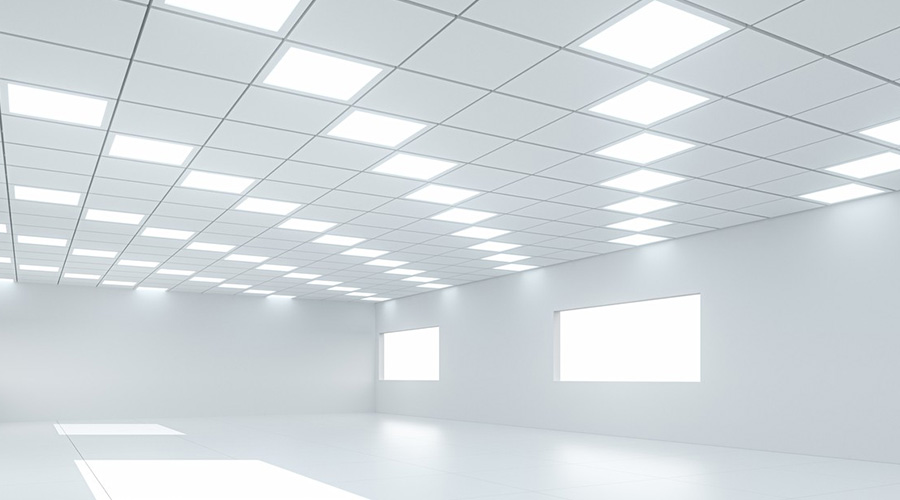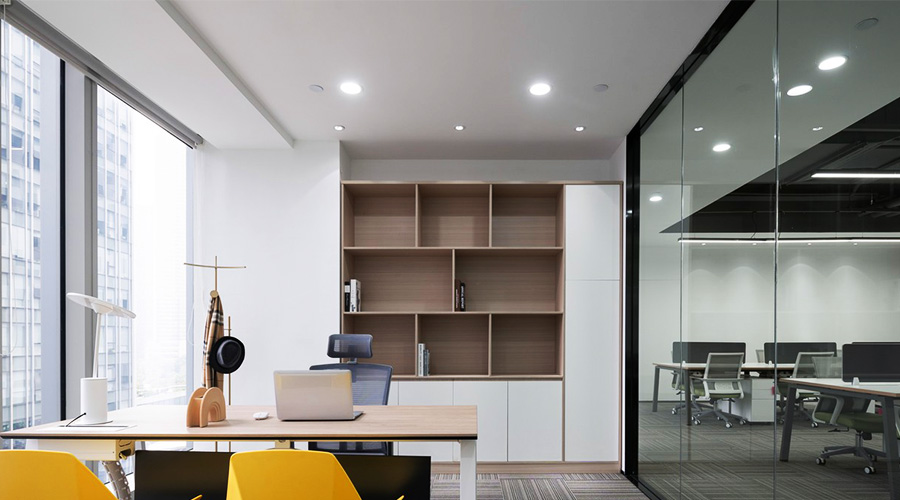In today’s pursuit of high efficiency, energy saving and environmental protection, Indoor LED Lighting (indoor LED lighting) with its unique advantages, such as excellent energy efficiency, long life, environmentally friendly materials and flexible light colour regulation, is gradually replacing the traditional lighting methods, and has become the standard of modern office and residential environment. However, in the face of a wide range of LED lighting products on the market, how to make both demand-compliant and cost-effective purchasing decisions has become a challenge for many companies and individuals. In this article, we’ll take a closer look at some of the key factors you need to consider when sourcing Indoor LED Lighting, to help you find the perfect fit amongst the many options available.
1. In-depth understanding of needs and scientific budget planning
Needs analysis: meticulous and precise positioning
Before purchasing Indoor LED Lighting, the first task is to conduct an exhaustive needs analysis. This is not just a simple measurement of the size of the space, but also a comprehensive consideration of the function of the space, the people who use it, and the lighting needs. For example, offices need bright, even lighting to improve productivity; meeting rooms need soft, adjustable light colours to create a comfortable atmosphere for discussion; and corridors and breakout areas need to be lit safely and aesthetically. Through meticulous demand analysis, we can pinpoint the lighting needs of each space, providing a strong basis for subsequent lighting selection.
Budget setting: living within one's means and rationalising allocations
Once the need is clear, the next step is to set a reasonable budget for the purchase. The budget should be based on the company’s financial situation, the urgency of the lighting retrofit and the expected return on investment. Under the principle of keeping expenditure within the limits of revenues, we need to allocate the budget appropriately to ensure that the current lighting needs can be met without over-consuming the company’s resources. At the same time, we also need to consider reserving a certain amount of budgetary space to cope with possible unforeseen circumstances or future expansion needs.
2. Selected types of lamps and lanterns, and decorative style complement each other
Functional matching: flexible options to suit local conditions
After determining your lighting needs and budget, the next step is to choose the right type of fixture. Different spaces require different types of lighting. For example, a large open office area is suitable for ceiling lights or chandeliers to provide uniform and bright lighting; while areas that require localised accent lighting such as bookshelves and artwork display areas are more suitable for downlights or spotlights. In addition, we also need to consider the installation height, angle and control of the lamps and lanterns to ensure that they can give full play to the lighting effect.
Style co-ordination: blends into the environment and enhances aesthetics
In addition to matching the function, the appearance of the lamp design is also an important factor that can not be ignored. A coordinated with the interior decoration style of the lamps can not only enhance the quality of lighting can also add a touch of unique flavour for the space. Therefore, when choosing lamps we need to fully consider its material, colour, shape and design style and other factors to ensure that it complements the interior environment.
3. In-depth analysis of performance parameters to ensure the quality of lighting
Light source type and brightness: energy efficient, bright and comfortable
As one of the most advanced light source technologies, LEDs are favoured for their high efficiency and energy saving features. When choosing Indoor LED Lighting, we need to make sure that the LED light source is genuine to ensure that it has the advantages of high brightness, low power consumption and long life. At the same time, we also need to choose the right power and brightness according to the needs of the space to ensure that the lighting effect is both bright and comfortable.
Colour Temperature and Colour Rendering Index: Creating Ambience and Reducing Colour
The colour temperature determines the warmth and coolness of the lighting atmosphere while the colour rendering index affects the true reproduction of the colours of objects. When choosing Indoor LED Lighting, we need to select the right colour temperature according to the function and usage requirements of the space to create a comfortable lighting atmosphere. For example, meeting rooms and lounge areas are suitable for warm colours to create a warm and comfortable atmosphere; while offices and studios are more suitable for cool colours to improve work efficiency. In addition, we also need to pay attention to the colour rendering index of the lamps to ensure that they can truly reproduce the colour of objects to enhance the visual experience.
4. Focusing on energy conservation and environmental protection to help sustainable development
Energy efficiency ratio: energy efficient and cost effective
Energy efficiency ratio is one of the most important indicators of the energy-saving performance of LED luminaires. Choosing LED lamps with high energy efficiency ratio can significantly reduce energy consumption and electricity expenses thus saving a lot of operating costs for enterprises. In the procurement process we need to carefully compare the energy efficiency ratio data of different brands and models to ensure that the selected lamps and lanterns have excellent energy-saving performance.
Environmentally friendly materials: green lighting, guarding health
In addition to energy efficiency, environmental friendliness is one of the most important factors to consider when choosing Indoor LED Lighting. We need to pay attention to the environmental friendliness of the housing and internal materials of the lamps to ensure that they comply with the relevant environmental standards and reduce the emission of harmful substances. Choosing LED lighting made from environmentally friendly materials not only protects our health but also contributes to the sustainability of the planet.
5. Ensure safety and comfort and create a healthy lighting environment
Safety certification: authoritative guarantee, peace of mind
When choosing Indoor LED Lighting we need to make sure that it has the relevant safety certificates such as CE, RoHS, etc. to ensure that it complies with national safety standards and electrical safety codes. This will provide us with a strong guarantee that we will be able to use the product with greater peace of mind.
Anti-glare design: comfortable illumination and protection of eyesight
Glare is one of the most important factors affecting lighting comfort. When choosing Indoor LED Lighting we need to look for an anti-glare design to minimise the impact of harsh light on visual comfort. Especially in the office area and reading area where we need to work for a long time, we need to choose lamps with excellent anti-glare performance to protect our eyesight health.
6. Comprehensive consideration of brand and cost-effective, to make informed decisions
Brand reputation: quality assurance, after-sales worry-free
Choosing Indoor LED Lighting from famous brands usually means higher quality assurance and perfect after-sales service. These brands usually have advanced production technology and strict quality control system to provide us with high quality lighting products. At the same time, they also provide perfect after-sales service system to make us feel more at ease in the process of using.
Value for money: comprehensive consideration, reasonable purchase
When purchasing Indoor LED Lighting we also need to consider a number of factors such as price, performance and lifetime to make the most cost effective decision. We need to compare the price difference between different brands and models as well as their performance and lifetime to choose the best product for our needs. At the same time, we also need to pay attention to avoid the blind pursuit of low prices and ignore the importance of product quality and performance to avoid unnecessary losses and waste.
7. Focus on post maintenance and replacement costs to reduce long-term operating costs
Warranty period and warranty policy: clarifying responsibilities and reducing risks
When choosing Indoor LED Lighting we need to pay attention to its warranty period and warranty policy to ensure that we can get timely technical support and repair service in the process of use. This will help us to reduce the risk of use and minimise the loss and inconvenience caused by a faulty luminaire.
Ease of maintenance: simple and easy to use, reducing costs
In order to facilitate later maintenance and replacement we also need to choose the type and structure of the luminaire that is easy to maintain and replace. This will help us to reduce maintenance and time costs and extend the life of the luminaire. When choosing a luminaire we can pay attention to its structural design is reasonable, easy to disassemble and whether it has a convenient way of cleaning and maintenance and other factors to ensure that it can meet our later maintenance needs.
In summary sourcing Indoor LED Lighting is a process that requires a number of factors to be considered. Through in-depth understanding of the needs, scientific budget planning, selection of lamps and lanterns, in-depth analysis of the performance parameters, focus on energy saving and environmental protection, to ensure safety and comfort, comprehensive consideration of the brand and cost-effective, as well as attention to the maintenance and replacement costs and other key factors, we will be able to make a wise purchasing decision and bring a more high-quality, efficient and environmentally friendly lighting experience for businesses or individuals.






